Victorian farmers reveal the hidden pressures of widespread drought
Farmers desperate for any sign of rain say the cost of carting water and feed is creating more pressure in the worst season some have ever seen.
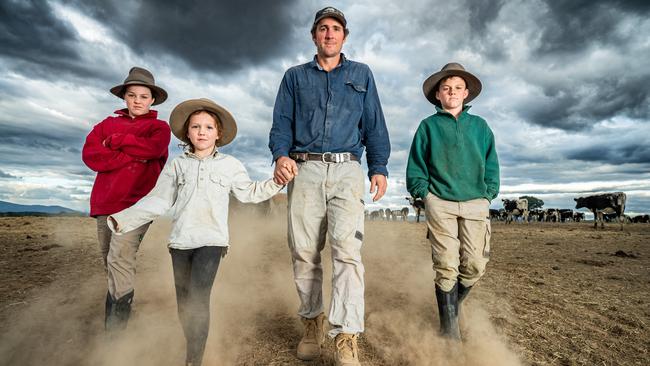
Victoria
Don't miss out on the headlines from Victoria. Followed categories will be added to My News.
Dry and dusty.
They’re the words farmers are using to describe their properties as they are ravaged by drought.
They’re desperate for any sign of rain so they can stop carting water around for stock to drink, stop buying in feed from interstate.
And so they can know their farms will survive as cost of living pressures rise regardless of what the weather does.
Chris and Imogen Dinges farm prime lambs and beef cattle at Bulart near Cavendish in the state’s west.
It’s the worst season they have seen in 25 years.
Paddocks are bare, Chris says, with all the little dams dry and cracked.
Some landowners are able to move water around their paddocks. Others have even run out in their house tanks.
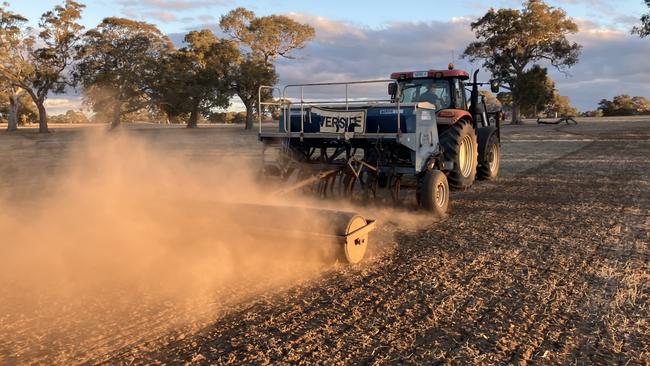
“There’s no cover left in the paddock, when the wind blows it’s all dust,” he says.
Despite a tough year in 2024, a few good spring rains resulted in some hay, but it’s not enough.
As the weather cools, the sheep and cattle eat more to keep warm and — as soon as they hear a motor of an auger, tractor or motorbike turn — they come flocking for feed.
And with lambing just around the corner, hand feeding just presents another problem with mums so hungry they’ll leave their babies and “chase the grain”.
“You’re in there that often with tractors and feeders and they just leave their lambs and chase the grain,” he says.
“It was a disaster last year.”
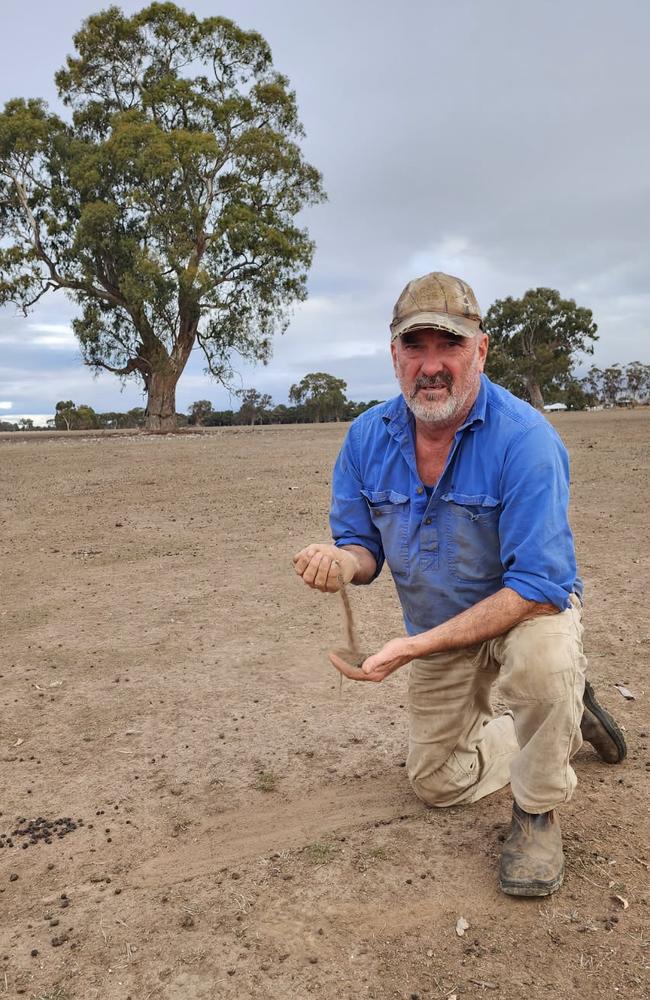
Every time the long-range forecast mentions rain there’s hope but so far, none has turned up.
Farmers are being forced to bring in feed from interstate but the freight costs are “killing” them.
“Now we’re getting a little bit more recognition, but there was nothing said about how bad it was because it hasn’t just got bad, it’s been bad here for five months,” he says.
“They’re not doing anything at the moment. We’ve got pipelines fairly close to our farms but they’re not letting anyone take water out of it.
“Little things to make water more accessible would help.”
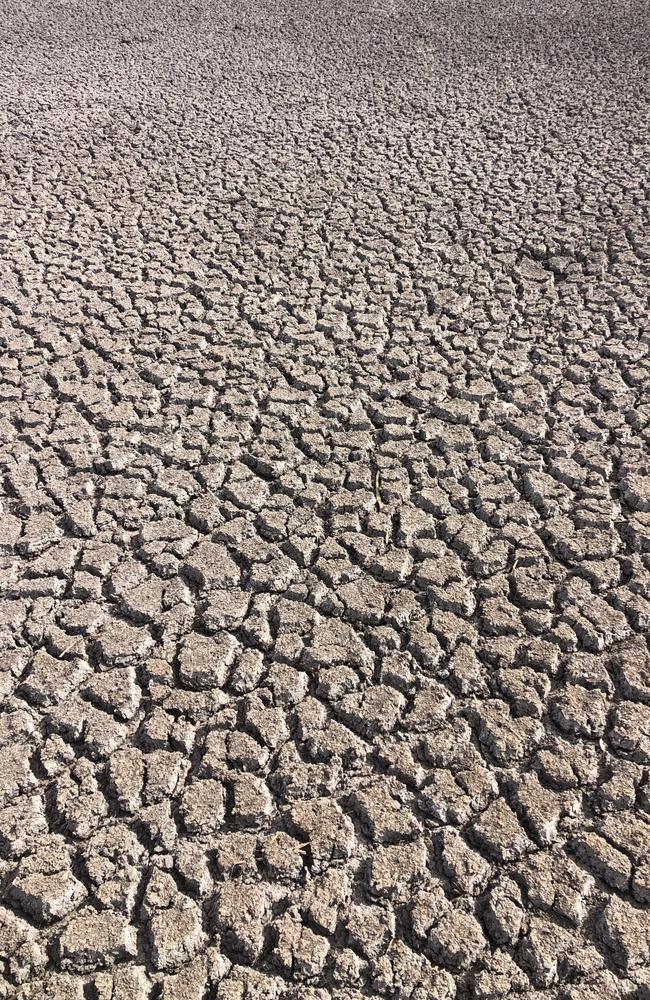
Half an hour away in Croxton East, two weeks of April rain brought hope.
But on lamb farmer Matt Kelly’s property, it just gave bare paddocks the illusion of green.
Any germinated grass has already shrivelled and died.
“We didn’t get a break until late June last year so two dry periods in a row is a bit daunting,” he says.
“The majority of the sheep are living on barley I’m buying but normally they’d be eating green grass at this time.
“I don’t doubt once it does rain though we will grow a lot of feed quickly.”
But until that rain comes, each week is more stressful than the last for Matt.
“With the work done in the early 2000s we know how to feed sheep now and we can look after our animals really well,” he says.
“The money is the challenging bit because you have to keep buying in truckloads.”
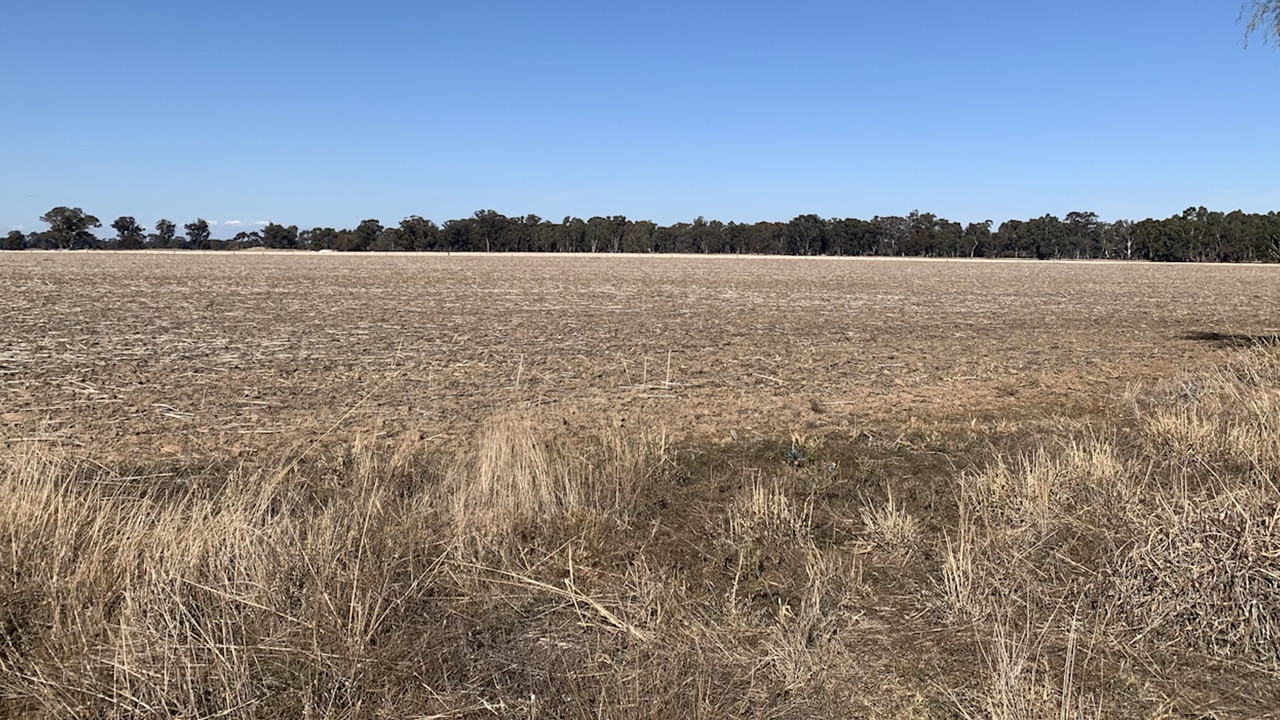
In the 10 years he’s had on the farm, Matt says eight were good and the lamb industry did experience a climb in that time.
But no one has a crystal ball, he says. Farming is about timing and not everyone has cash reserves.
“You get opportunities to buy extra land or do big things but you don’t know when it’s going to get ugly and it’s certainly has gone a bit that way,” he says.
“For people who do need cash to keep buying feed, some low interest loans would probably help.
“People don’t need gifts, but they need access to money so that they can be confident buying feed they need to do right by their animals.”
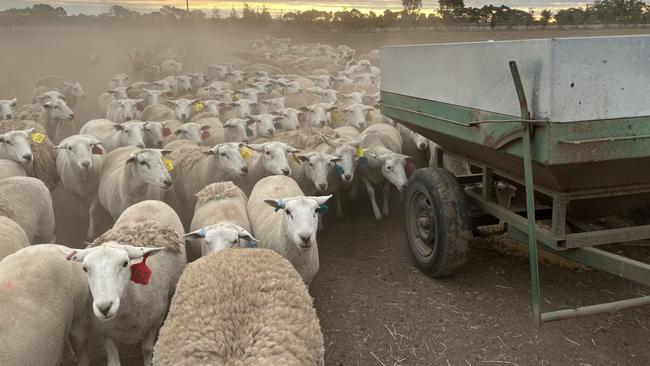
In the north of the state, it does not look any greener.
Whorouly dairy farmer Jon Pethybridge described his property — set between Wangaratta and Myrtleford — as “very, bloody dry”.
And farmers feel like they’re on their own.
“It’s amazing how quickly things change, we had okay rain in March and we thought we’d get going but now its been close to 50 days since we’ve had any,” he says.
“When you have dry periods everyone has the same issue of no feed so it accelerates the issue and people are having to get it from Queensland now.”
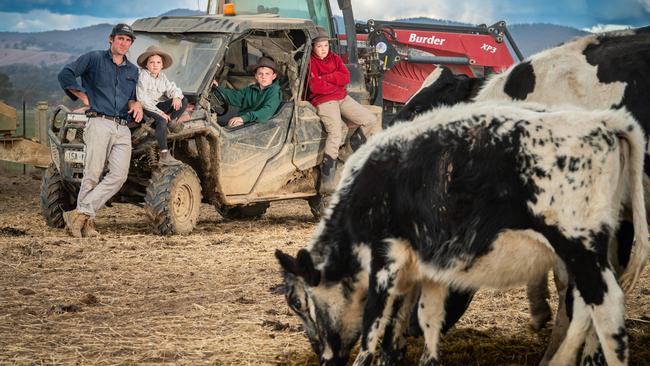
Seed planted in March would normally be about five to 10cm high — instead, it’s just sprouting out of the ground and hanging on for “dear life”.
If there’s no rain in the next fortnight it will die.
“We’ll be in real trouble, $30,000 to $40,000 worth of seed gone and we’ll have to start again,” he says.
“We need the government to start working with banks and looking at interest rates for some relief.
“Farmers are borrowing a lot to just stay afloat so they need help to pay the bills which filters back into the economy.”
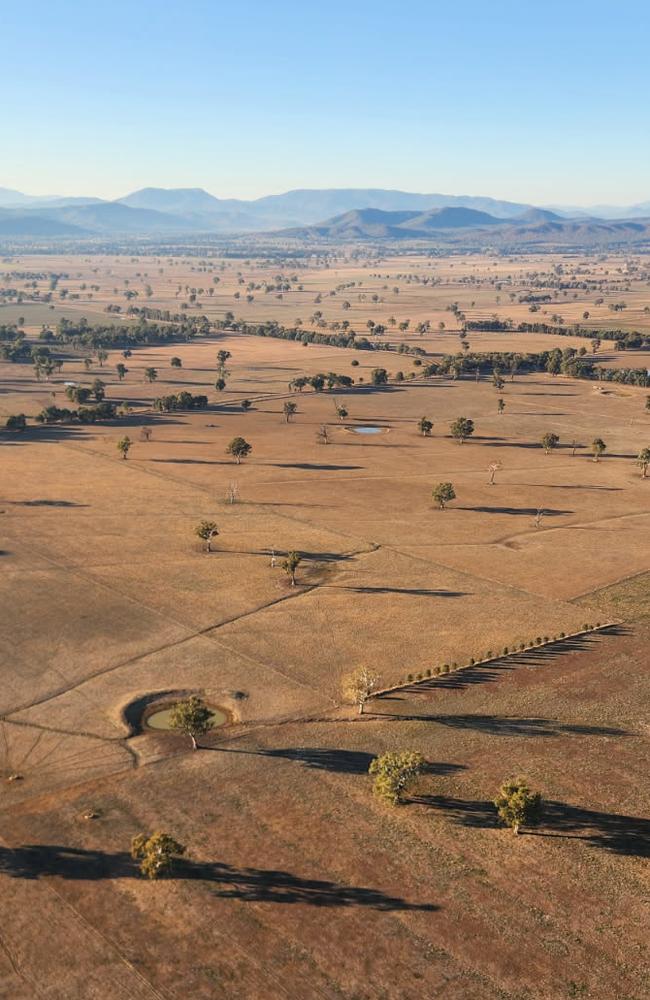
Over in the east, farmers are making the most of what is available to them.
On Marian Macdonald’s Yarram property — used for agistment and hay — a neighbour has made the most of the standing grass left over after cutting for silage.
Marian says she takes her hat off to the dairy farmer who was turning up between milking to cut, rake and bail the straw and take it home.
“He bought a heap of our silage and said he was still going to be short on feed so asked if he could do it,” she says.
“It’s just stalky regrowth, nothing special, but you have to use what you can.
“It’s mind boggling that it’s happening in May too.”
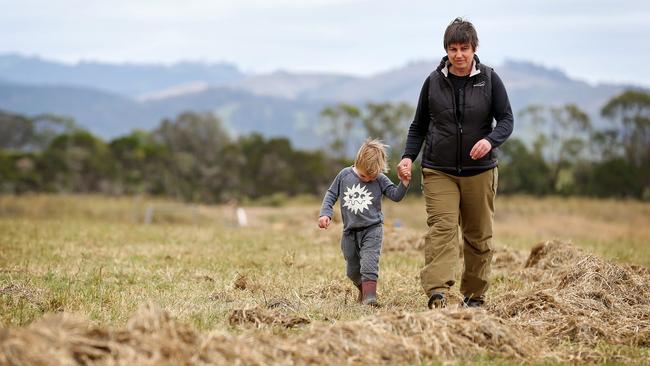
And at Steve Harrison’s Giffard West Merino stud farm, the drought is creeping closer.
“We are right on the edge of it, if you go 10 minutes south of where we are it’s dry, there’s no green pick at all,” Steve says.
“People are having to cart water and feed and there’s going to come a point where that’s not affordable anymore.
“Some people are also opting to reduce their herd size.”
Councils need to subsidise rates for farmers, he says. That’s what past experience has taught him.
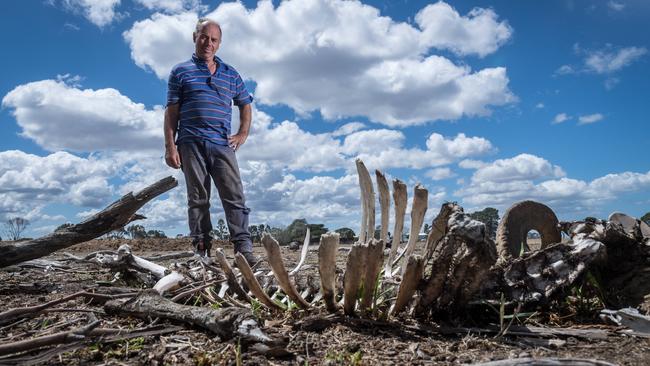
“It’s a more equitable and fairer way to reduce costs for the farmers in this difficult time because it covers the small farmer and the big farmer.”
But perhaps the most critical part of getting through a crisis like drought, he’s learnt, is the community rallying together.
“There’s a lot of phone calls on going on and everyone’s talking to everyone in my district,” Steve says.
“Those community events that happen, whether it’s a local sport or just someone’s party enable people men, women and kids, just to talk.”
More Coverage
Originally published as Victorian farmers reveal the hidden pressures of widespread drought




